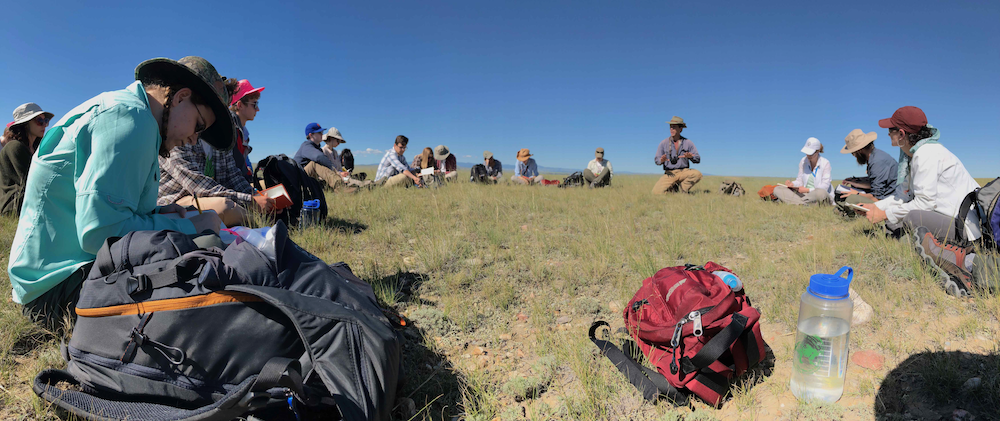
This course serves as a directed study elective for Studio Arts majors. Students apply for consideration and four students are invited to enroll in the 17-day summer field study offered since launching in 2009. Preparatory work consists of readings and response papers that address the early unfolding of American art and how the art of the West develops from these and other influences; how and why people get lost and what happens when they are found, or choose to stay lost; and an overview of land art and how the experience of the pilgrimage may influence personal quests.
The field study is situated in Rock River, Wyoming between a 1930s motor lodge as primary residence, a 1919 bank building as makeshift studio, and the University’s 4,000 acre Spring Creek Preserve. Students interact with others simultaneously enrolled in the Paleoecology field study on the preserve exploring the landscape, flora and fauna, and gaining greater historical and geologic context while absorbing impressions for their creative work - the group camps at the preserve along with the science group at least two nights.
Offering a complete focus on creative work within a community of others engaged in the same pursuits, students are fully engaged in their work approximately eight hours per day. Spontaneous and planned critiques, guest artists, and local field trips offer additional insights. A mid-field study trip to Utah offers a new landscape with the exploration of two, land-art works in more remote locales. The course culminates with presentations to the Paleoecology group regarding creative work and Wyoming influences. A journal, artist statement, and reflective final paper are submitted upon return to Pittsburgh.
